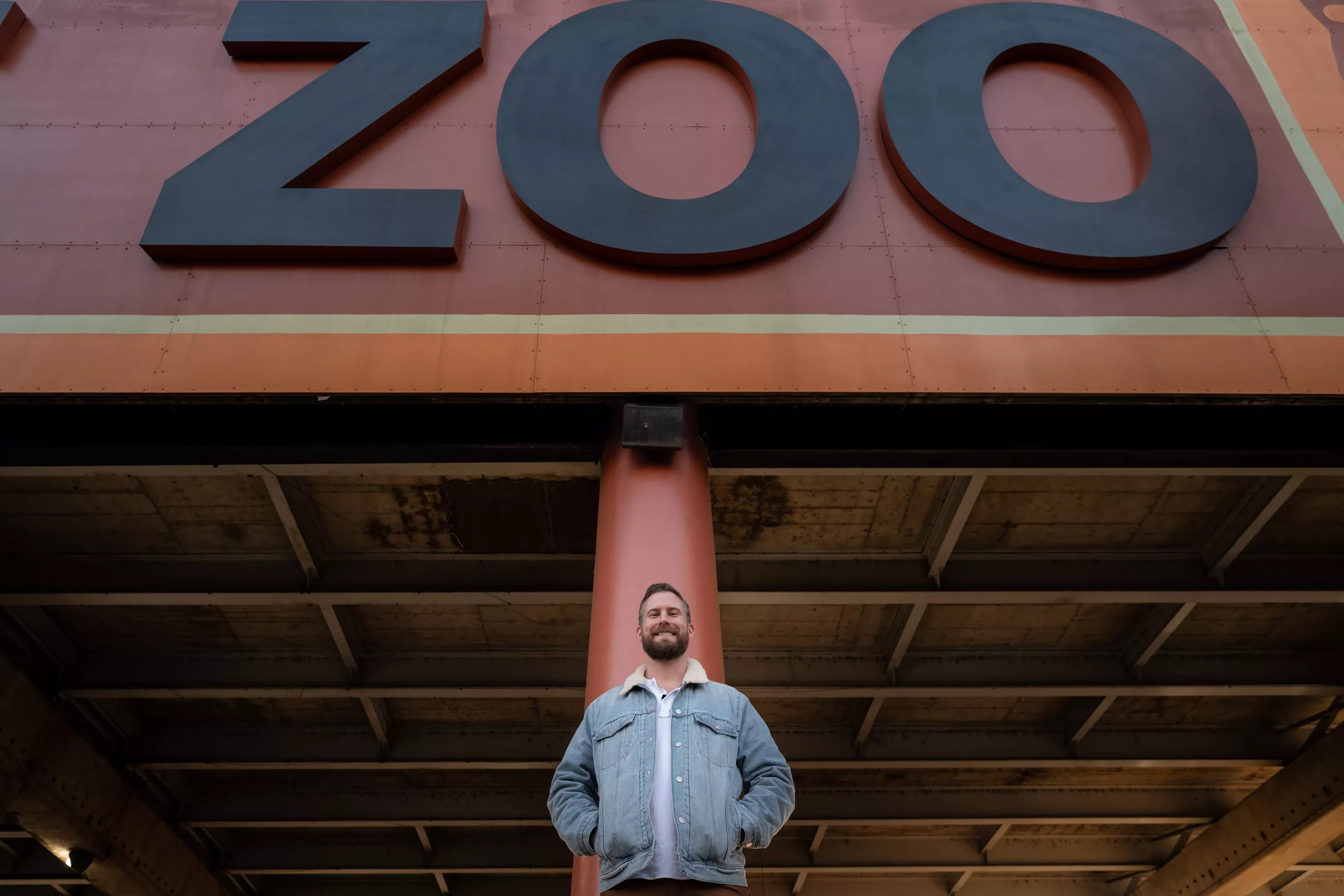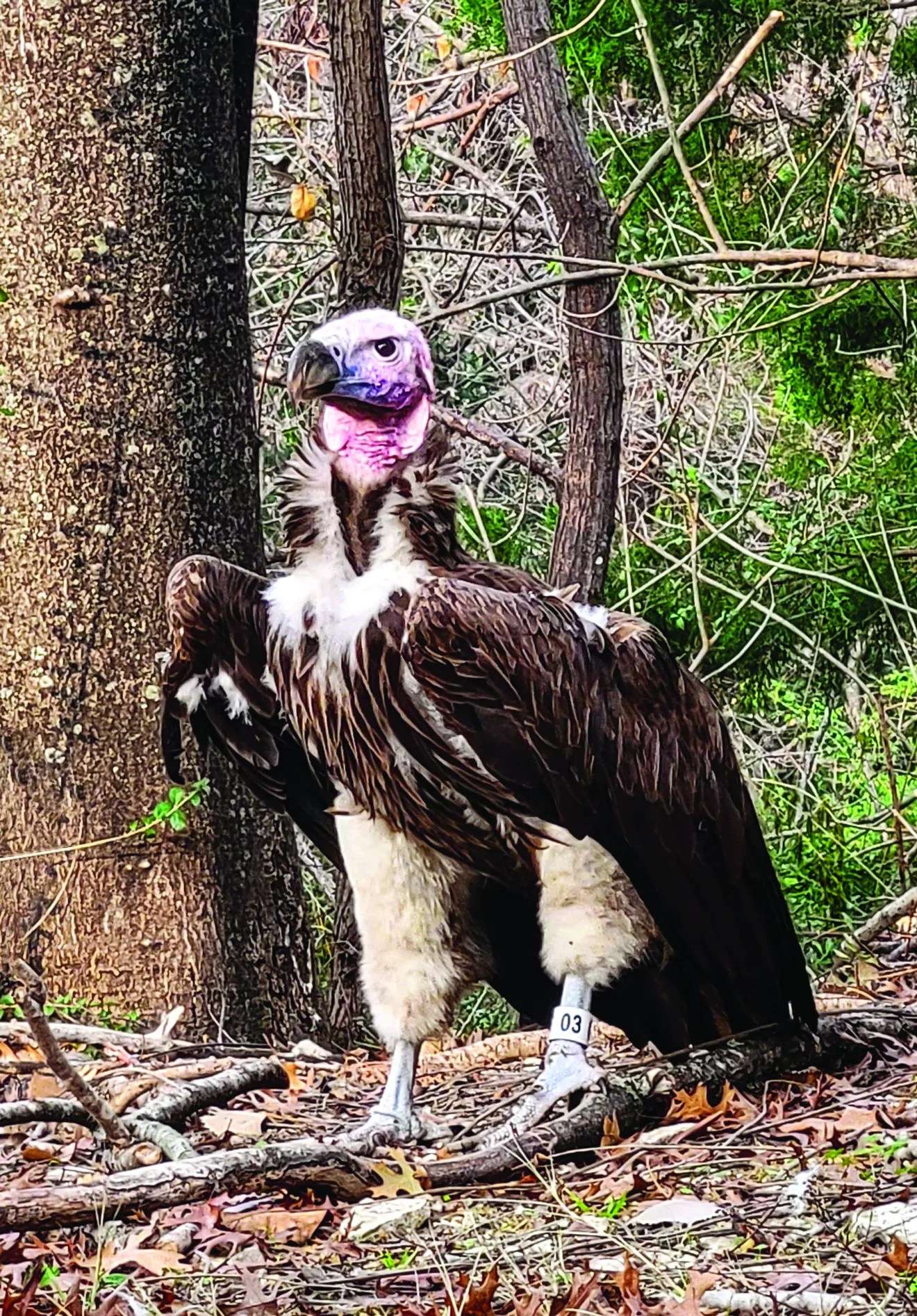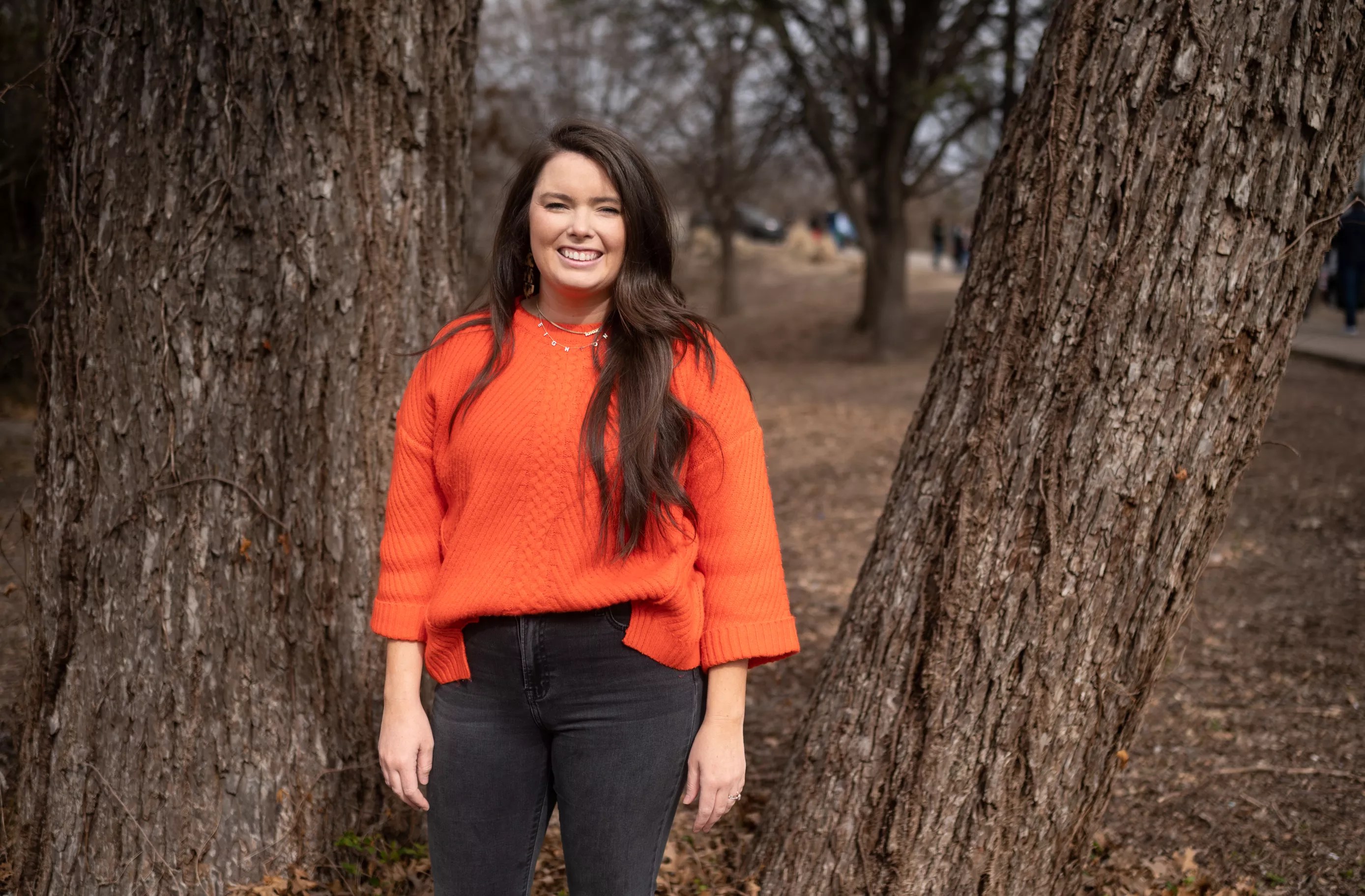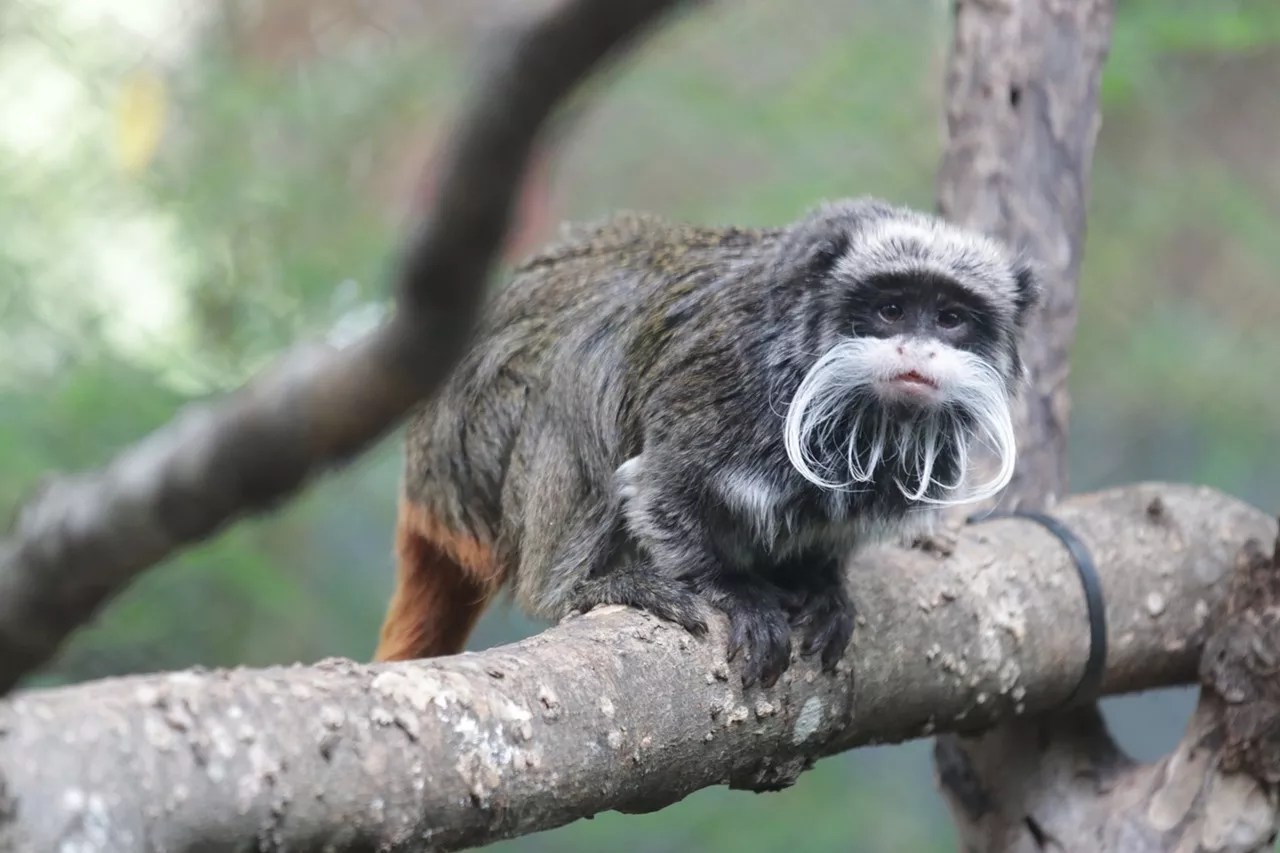
Mike Brooks

Audio By Carbonatix
Wild emperor tamarins thrive in tropical rainforests, so it’s safe to assume that on Tuesday, Jan. 31, Bella and Finn were cold. It was 37 degrees inside the boarded-up community home in Lancaster where the pair of monkeys was finally found. The day before, news broke that they’d been swiped from the Dallas Zoo as a winter storm swept over North Texas.
One of the primates was filmed greeting its rescuers, sitting perched atop a section of chain-link fence in a closet. In the house, authorities reportedly encountered moldy clothing, animal feces, dead fish and domestic cats.
Bella and Finn had shed some weight but were otherwise unharmed. The white-whiskered monkeys’ return was a happy moment for the Dallas Zoo, which earlier that month had fallen victim to at least three other illicit acts.

A recent Dallas Zoo loss was the death of its lappet-faced vulture named Pin.
courtesy Dallas Zoo
When news happens, Dallas Observer is there —
Your support strengthens our coverage.
We’re aiming to raise $30,000 by December 31, so we can continue covering what matters most to you. If the Dallas Observer matters to you, please take action and contribute today, so when news happens, our reporters can be there.
First, there was Nova, the 25-pound clouded leopard who went missing after slipping through a “suspicious opening” in her enclosure. She was located within the day. Someone had also apparently tampered with the langur monkey exhibit, but none of those animals escaped. Then, a 35-year-old lappet-faced vulture named Pin died from what appeared to be a stab wound, WFAA reported.
When Nova went missing in mid-January, the Dallas Zoo tweeted it had closed for the day “due to a serious situation.” An outpouring of support followed, but not everyone offered condolences.
“Ban zoos,” one Twitter user wrote. It was a sentiment both repeated and opposed by others on social media after the Dallas Zoo posted about the death of Pin.
The bizarre back-to-back occurrences have prompted onlookers in Texas and beyond to ask: “What the heck is going on at the Dallas Zoo?” Could animal rights activists be to blame? Disgruntled zoo employees? Black-market smugglers? After weeks of an ever-deepening mystery, answers started to trickle in.
The last day of January, the Dallas Police Department tweeted out a photo of someone officers wanted to speak with about Bella and Finn. The grainy picture showed a young man wearing a toboggan hat and a dark jacket with the hood up, holding a bag of what looked like nacho cheese-flavored chips. Social media users were quick to come up with a nickname for the fellow: the Doritos Bandit.
Three days later, local media reported that police had made an arrest. Davion Dwight Irvin, 24, was apprehended after he’d been spotted lurking near another animal exhibit at the Dallas World Aquarium.
Leading up to the arrest, members at Lancaster’s Family Center Church of God in Christ reportedly recognized Irvin from the police photo and tipped off the authorities. It wasn’t the first time someone had broken into their adjacent community house nor the first time animals – namely, cats and birds – had been discovered after a break-in.
Irvin was taken to the Dallas County Jail, charged with six counts of animal cruelty and two counts of burglary of a building. He remained in jail as of last week with bonds totaling $130,000. Dallas police said earlier this month the probe into Pin’s apparent killing hadn’t yet come to a close, and additional charges were possible. Irvin reportedly told investigators following his arrest that if he were released, he’d nab more animals.
The Dallas Zoo is hardening its security by adding cameras and fencing and nearly tripling patrols, among other measures. Its neighbor to the west, the Fort Worth Zoo, has also ramped up security in response.
For weeks, the strange string of zoo break-ins dominated conversations in North Texas with each new development. It likely even inspired copycat attacks both within and outside the Lone Star State. Central Park Zoo in New York announced in early February that one of its owls escaped following an act of vandalism. Days later, Houston Zoo officials reported that they believed someone had cut into the mesh fence of the brown pelican habitat.
Outside of the “zoo-dunit’s” morbid entertainment value, the scandal is also rekindling an old debate with fresh fuel. While proponents insist that zoos offer unparalleled benefits in terms of education and conservation, some animal rights advocates argue that it’s time to buck them for good.
***

Parent and teacher Emilie Flaherty says that the Dallas Zoo brings the community together.
Mike Brooks
During one of their trips to the Dallas Zoo, Jordan Gooch’s son became enthralled by snakes. The visit stuck with 2-year-old Remy, who even got a chance to touch some nonvenomous serpents brought out by staff. Gooch sees the impression that such experiences make on his son, who may even recount them days later to his teachers at school.
Gooch’s family enjoys checking out talks at the zoo, including a recent one about penguins. He said young attendees can witness empathy in action in the way that zoo workers tend to fauna. “They get to see people interact with the animals,” he said. “So, I think that that’s one big driving factor in [Remy] understanding the human-animal relationship is not this disconnected thing, but it’s more symbiotic than that.”
“The zoo is part of our community – it’s like six minutes away from our house – and so, to see them struggling through something like this, it’s just painful to see happen on a consistent basis.” – Jordan Gooch, Dallas Zoo fan
Remy is also fond of the monkeys, so Gooch was sad to hear that the emperor tamarins had been abducted – not to mention the other incidents.
“The zoo is part of our community – it’s like six minutes away from our house – and so, to see them struggling through something like this, it’s just painful to see happen on a consistent basis,” he said. “Because you do see a lot of people that work there who actually care and want to see good done for these animals.”
Emilie Flaherty agrees that the Dallas Zoo adds much to the Oak Cliff area, citing its accessibility to families of varying socioeconomic backgrounds. The teacher described it as a “beautiful” zoo that brings the community together, and she loves taking her own children.
Flaherty said her family has memberships to other Dallas institutions like the arboretum and Perot Museum of Nature and Science, but she thinks the zoo is her 3-year-old’s favorite. There, he can feed the giraffes, goof around on the playground or scope out the gorillas and hippos in their enclosures.
Kids, particularly toddlers, learn much about life when they go to the zoo, she said. They can answer questions like: What color are the flamingos over there? Can you count the legs on that baboon?
Flaherty, who is also sad for what zoo staff have had to endure, said she’s never had a negative experience there. The way she sees it, the positive aspects of zoos far outweigh the negatives.
“As a mom and a teacher, I have personally just witnessed so much educational opportunity,” she said. “In the community that we live in, giving kids access to experiences like going to a zoo gives them schema, it gives them background knowledge. … And how do kids learn? They have to connect one thing to something they already know, and I just feel like being able to take kids to the zoo really gives them experiences to connect the things that they’re learning to.”
***

Two emperor tamarins were abducted from the Dallas Zoo on January 31, 2023.
courtesy Dallas Zoo
Jonathan Miot looked relieved as he stood in front of an outdoor enclosure at the Santa Fe College Teaching Zoo in Gainesville, Florida. The sun beat down on the bespectacled zoo director as he spoke to reporters in early June 2018. An arrest had just been made in connection with the theft of 11 of the zoo’s animals; police would later apprehend additional suspects.
It was the first time in the Santa Fe College Teaching Zoo’s 48 years that an animal had gone missing, news station WUFT reported at the time.
The 11 stolen animals included a prehensile-tailed skink and a squirrel monkey. Two others, a box turtle and gopher tortoise, were ultimately never recovered, Miot told the Observer earlier this month.
Learning what the Dallas Zoo is going through brought up some painful memories of the theft at his own facility.
“We were pretty shocked over it,” Miot recalled. “We felt personally violated, but we worked with law enforcement officers … we engaged with the community, and that’s what made the difference to getting our case resolved.”
Afterward, Miot’s zoo updated its security measures and implemented new ones, he said, and an armed police force stands on guard. The zookeepers there are much more vigilant today about keeping an eye out for would-be wrongdoers. But the blame rests squarely on the perpetrators, he said, not the zoo.
Among those in the broader zoo community, the Dallas Zoo is in great standing, Miot said. It’s part of the Association of Zoos and Aquariums, which he described as “the gold standard” for the industry. Institutions strive to attain and maintain their AZA accreditation, for which they must reapply every five years. They must meet exceptionally high standards to get there, including passing an inspection by industry experts; providing excellent animal nutrition, veterinary care and staff expertise; and maintaining financial stability.
AZA counts some 238 accredited institutions and emphasizes field conservation efforts. An annual report from 2021 claims that “more than 900 species, subspecies, and species groups benefited from both species-specific and habitat-focused conservation projects.” Of those, 120 species and subspecies were considered critically endangered.
National Geographic noted in 2019 that many zoos have introduced captive breeding programs for endangered species, leading to the reintroduction into the wild of some animals, like the Arabian oryx. Critics insist that such conservation boasts may be overstated. A leader at the animal rights group People for the Ethical Treatment of Animals, for instance, told National Geographic: “Zoos are prisons for animals, camouflaging their cruelty with conservation claims.”
One organization that wants to see zoos phased out over time is Born Free USA, whose programs director, Liz Tyson-Griffin, told the Observer that her group doesn’t think zoos serve a conservation purpose. Rather, she said, they likely distract from other crucial conservation work.
Zoos breed animals for a lifetime in captivity without any real pretense they’ll someday be set free in wild habitats, Tyson-Griffin said. The institutions may claim that entrance fees are used for their conservation aims, but zoos’ money mostly “goes to holding animals captive” instead, she said.
“You know, nobody’s going to suffer inherently because they don’t get to see an animal in a zoo.” – Liz Tyson-Griffin, Born Free USA
The “zoos are educational” justification doesn’t sit well with Tyson-Griffin, either. While children might enjoy seeing animals at the zoo, she cited a study that suggests they aren’t really learning much while there. And animals meant for the wild don’t fare well in captivity, which is often manifested in behaviors like bar-biting, pacing and swaying.
Tyson-Griffin has also heard the argument that zoos are needed because few folks can afford to fly to Africa for a safari excursion.
“But that implies that we’ve got a right to see these animals, and that they should be held captive because we feel like we want to look at them. And that just feels like a really trivial reason to hold millions of animals captive around the world,” she said. “You know, nobody’s going to suffer inherently because they don’t get to see an animal in a zoo. … It might be exciting to see a tiger or an elephant, but it shouldn’t be construed as a right.”
Zoos may also tout their research efforts, but Tyson-Griffin notes that such studies are often focused on dealing with captive animals instead of helping those in the wild. In addition, the vast majority of zoo-held animals belong to species that aren’t threatened, she said.
Born Free USA recently released a report that found zoos across the country, including the one in Dallas, have imported wild elephants, running counter to conservation efforts. Tyson-Griffin said many zoos are elephant-consumers, meaning that instead of creating and sustaining new populations in captivity, they’re stripping the animals from their native habitat. The Dallas Zoo’s track record for elephants has been uneven. In 2018, advocacy group In Defense of Animals named it the third-worst zoo for those animals in the entire U.S. because of allegations it had “[severed] the social bonds of traumatized elephants,” CultureMap Dallas reported at the time.
An article by Tyson-Griffin on Born Free USA’s website also mentions an incident at the Dallas Zoo in July 2015: A 3-month-old giraffe died after running into the perimeter edge of her habitat, breaking three of her long neck’s vertebrae.
Tyson-Griffin acknowledges that fully phasing out zoos can’t happen overnight, calling it a “project for a lifetime.” Still, it’s a goal she’s working toward. To her, zoos operate on a spectrum of “bad” to “better.”
“We wouldn’t say that there is such a thing as a ‘good zoo,'” she said, “because we just don’t think they should exist.”
***
Andrew Gregory has heard the anti-zoo arguments before. To the assistant professor of wildlife conservation at the University of North Texas, most of them are misguided.
The idea that zoos don’t send money to conservation efforts is “patently false,” Gregory said. Another one he’s heard is that zookeepers mistreat animals, which also strikes him as outrageous. But there is one ethical claim that Gregory admits rings at least a little true: Keeping living beings in captivity is cruel. “Because no matter how good of an enclosure you make,” he said, “it’s not the same as being wild.”
Gregory previously did work with the Toledo Zoo in Ohio, and he said that the institution has “very active” conservation programs, as does the Dallas Zoo. Such entities have been known to spend tens of thousands of dollars, sometimes hundreds of thousands, on conservation efforts on a local and global scale, he said.
“Because no matter how good of an enclosure you make, it’s not the same as being wild.” – Andrew Gregory, University of North Texas
The Toledo Zoo forked over millions on a hatchery that ultimately saw some 3,000 baby sturgeon go back into the wild with an estimated 97% survival rate, Gregory said. Dallas Zoo, meanwhile, directly contributed nearly $342,000 to its conservation partners in 2021-22, a zoo representative said, adding that the money came from earned revenue and fundraising, not operating funds or support from the city. Additional expenses for that year related to the zoo’s conservation-program support totaled more than $548,150.
Viewers can learn about animals through slickly produced series like Planet Earth, Gregory said, but they might not necessarily experience the same personal connection that they would at an exhibit. There may be a certain “romanticism about what it’s like to be a wild animal,” but zoo animals are well-cared for and in most cases have a longer life expectancy than their wild counterparts, he said. Thanks to attentive zoo staff, they receive medical treatments and are fed optimal diets.
Born Free USA’s Tyson-Griffin has a different take on this subject, though. She said that while zoo animals should theoretically outlive those in the wild – and some do have comparable lifespans – certain captives die far younger than they otherwise would. “I know that the average life expectancy for an elephant in a U.S. zoo is 27 years, and they can live into their 60s and 70s,” Tyson-Griffin said. “So, there’s something very wrong there.”
Gregory agrees that an all-out zoo ban would be unlikely, at least in his lifetime. Zoos are often backed by wealthy patrons, and corporations may donate to zoos for tax breaks. As a result, those arguing for closure would be up against “powerful special interests.” And if a ban did come down tomorrow, he said, it wouldn’t be possible to turn countless zoo animals loose in the wild, so where would they go?
Regardless, Gregory thinks the ethical debate surrounding zoos in itself is productive. Like them or not, zoos instill the public with a sense of environmental consciousness at a time when many species are rapidly going extinct.
Everyone in this dialogue wants what’s best for wildlife. Even the man accused of breaking into the Dallas Zoo told police that he “loved animals.”
“[The debate is] centered on zoos, but that can’t help but extend into other areas of our life and existence, right? And I think that’s something that’s profoundly good that zoos benefit us with,” Gregory said. “Zoos have a benefit because they force us to think about something other than ourselves and our own species, and think about our place among the pantheon of species on this earth – not just ours.”